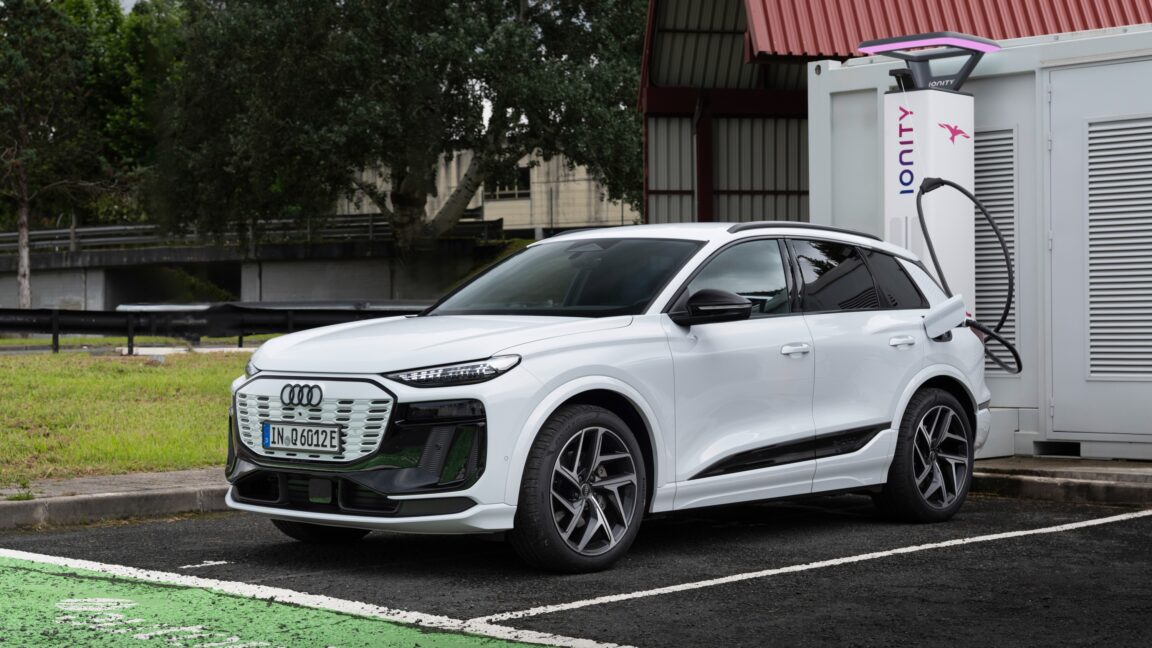Is this really an article saying heat pumps are more efficient than resistive heaters? Yes, that is why heat pumps exist.
The biggest issue is the battery itself. If it gets cold enough you can have difficulty even charging an EV outdoors. I would be a lot more concerned with whether or not my battery is well insulated and heated. Heat pumps are great and should be the default, but unless you’re going really far or have a very low range EV it’s not a huge issue.
Yes, resistive heat is expensive, but that’s only part of what makes heat pumps in cars more effective. They don’t just heat your cabin, they heat your battery so you maintain range while it’s cold out. Here’s an article with more details and some pretty infographics.
The heat pumps also preheat the battery so it can charge in extreme cold.
It defintely is a huge issue, considering resistive heaters use 3x as much energy. Most EVs have a “low range” and anything you can do increase it without adding more batteries and weight and cost, especially in winter, is a huge advantage.
The lowest range EV in the US is 114 miles. The average commute is 52 miles. Most EVs sold in the US have a range of 250 miles or more. So a resistive heater eating 10% of your range is way less of an issue than your battery not charging properly in cold weather. Again, heat pumps should be available, but they aren’t going to save you if cold weather kills your battery.
The average commute is 52 miles. Most EVs sold in the US have a range of 250 miles or more.
No one cares about “average commute” when buying an electric car and considering the offered range. They’re thinking about long trips.
So a resistive heater eating 10% of your range is way less of an issue than your battery not charging properly in cold weather.
Who said anything about batteries “not charging properly”? What does that even mean?
heat pumps should be available, but they aren’t going to save you if cold weather kills your battery.
We’re not talking about killing batteries, we’re talking about electric range. Heat pumps extend your electric range and 20 miles can absolutely be the difference between making it to the next charger or not.
Most people aren’t road tripping in their electric vehicle every day. If you don’t understand how temperature affects battery chemistry, capacity, and charging I don’t understand how you can even be in this conversation.
Most people aren’t road tripping in their electric vehicle every day.
They can’t road trip ever if the vehicle doesn’t have sufficient range. I don’t understand how you can even be in this conversation when you don’t understand basic principles like this.
If you don’t understand how temperature affects battery chemistry, capacity, and charging
I understand how it affects all of these. It doesn’t cause any of it to “not charge properly”. EVs are used in the coldest places in the world with no major charging problems.
Not sure how you are being downvoted. You’re absolutely right. Everyone I know that wants an EV wants more range.
I almost feel like you need two cars unless you are a 100% urban driver. An EV for commuting (with a plug at work) and shopping would make sense and a 2nd car, preferably some sort of hybrid, for everything else.
I’ve driven from Madison, WI to Chicago in an EV with ~100 mile range in cold weather. Wouldn’t be my first choice, but I was in a pinch at the time. It can work, but getting a reliable charger network is the biggest problem. Made three stops to chargers that were broken or inaccessible for various reasons.
That was a couple of years back, and I think it’d go a bit smoother now. The Chicagoland area has reasonably good charger network outlays (much better than Minneapolis, which is a joke). Still wouldn’t be my first choice, but it’s workable.
Not sure what your point is. I never said anything to the contrary.
Lots of people consider only their commute. They just don’t complain about… Making it to work OK? Or don’t announce it? The frequency of 200+ mile trips is vastly overestimated by anti-EV people in both terms of how often they do such trips and how many more people live in dense, urban areas. Lots of people already have shitty, dedicated commuter cars they wouldn’t want to sit in for more than an hour as it is. A half-dead 2011 Leaf would still cover my 40-mile round trip. Back when I daily’d a Geo Tracker, I’d take my spouse’s normal gas sedan if we had a trip. Or my weekend gas car. The average number of vehicles in US households that own cars is 2.3 cars. An EV can be slotted into most households without any real change.
Lots of people consider only their commute
No they don’t.
The frequency of 200+ mile trips is vastly overestimated by anti-EV people
The frequency is irrelevant. Again, if you want to go on a single trip, literally ever, in the entire time you ever own that vehicle, it needs to be able to make that trip, and it needs to be able to do it in a reasonable amount of time.
A half-dead 2011 Leaf would still cover my 40-mile round trip.
If you only ever drive back and forth to work, then I feel really really sorry for you, but you are an extreme minority in that sense.
if you want to go on a single trip, literally ever
Exactly.
We do a road trip about once/year, and our trips are long enough that renting a car for that specific trip is impractical.
We have two cars, a hybrid commuter (hopefully an EV soon) and an ICE family car (hopefully an EV soon). That family car isn’t going to be an EV until it can do >500 miles/charge, especially if refuels take >20 min. We rarely go that far, but when we do, we need the range because our trips are often >800 miles in a single day (usually only one actual stop for food, we pack lunches). Yeah, that trip isn’t very frequent, but it does happen and there’s no way I’m spending 2 hours of the trip waiting for my battery to recharge.
Our commuter, however, can absolutely be an EV, because the furthest it will ever need to go is about 100 miles in a single day (25 miles to work, 20 miles to the airport, 35 miles back home, and maybe a stop at a store). But it needs to be able to do that in winter as well as summer, and after a few years of ownership, so 150-200 miles is a better range.
You’re an excellent case for my point. Most car-owning households in the US have slightly more than 2 cars. An EV covers your needs 335 days of the year and a gas car covers the other 30 days, yet people act like that’s why they need a 7 seat suv every day. I plugin hybrid will be my next move when I stop picking up lumber every weekend and put my little trailer back in use for the once a month “haul”
If you have a garage or place to easily charge the EV when at home or work, the amount of time saved over the life of the car never having to go to a gas station is dramatically more than the amount of time spent charging an EV on a road trip.
I don’t understand what that has to do with anything?
I just said I’ll use one of the 2 other gas cars when needed and didn’t even mention the bikes, but OK, you do you, ignore everything I said about having multiple cars because you’re mated to yours for life or something. You speak for the world. You’re the face of the majority. There’s definitely not an actual silent majority of people who don’t give a shit about cars, don’t talk about cars, treat cars as a costly appliance, and keep buying EVs for their boring, sub-100 mile commutes.
I don’t speak for the world, facts do. You are not a “silent majority”. You are an extreme minority.
If only plug-in hybrids existed…
Which have a whole bunch of issues of their own. Like increased mechanical complexity, and that you might use gas so seldom that it becomes significantly water by the time you do need it.
might use gas so seldom
So don’t put gas in it if you don’t need it?
And now the seals are drying out and you’ll have problems later.
Modern PHEVs are smart enough to run the gas engine occasionally to keep it from going bad
And now it’s using gas when it didn’t otherwise need to.
if cold weather kills your battery
Tell us you’ve never driven an EV, especially in cold weather, without telling us you’ve never driven sn EV in cold weather.
Or maybe you should teach Norway how bad EVs are in cold weather, since over 90% of new car sales are EVs there.
Tell us you didn’t read the entire context of the thread without telling us you didn’t read the entire context of the thread.
Also, the fucking news for the last few years? There are EVs out there without enough cold protection for their batteries. Which is why, if you can drag your ego back up the thread, you’ll see that my original post said I would be more concerned with making sure my battery had those protections than a heat pump because the affect on range is much more drastic.
You know, as the article in the post points out. EVs are not all the same.
I’ve had EVs for 10 years and have never seen nor heard of any problems with cold other than decreased range (which is true of ICE as well). Again, you could learn from the Scandinavian countries, which greatly prefer EVs.
I know the resistive heater in my Volt can’t compare to the heat put out by the ICE. Often in the winter we’ll have to run the ICE to keep the cabin warm enough. It does have heated seats and wheel, but my wife is the type to set the heat to max until it gets too hot rather than just picking a temp and hitting auto to let the car manage it.
If the heat pump can put out more heat for less energy, that would be a boon. That might be the second biggest issue (next to range) that has my wife vetoing an all-electric car. She gets the next vehicle, but I want the one after that to be a full EV.
Fwiw, I’ve never had a lack of heat from my cars heat pump. It even warms up faster than a gasoline engine would. Most importantly, I can turn it on remotely to get warm before I get in the car. I never had that with a gas engine
Yeah and a lot are moving to heat pumps if they don’t already use them.
https://www.recurrentauto.com/questions/which-electric-vehicles-have-heat-pumps
There’s a list of models that have them.
If you have two cars, one EV and one ICE is a great option. I do recommend whoever is more enthusiastic about EVs get the first one, though.
I know the resistive heater in my Volt can’t compare to the heat put out by the ICE.
the ICE generates an insane amount of excess waste heat as a byproduct, so you have a virtually unlimited supply. The Volt is a PHEV so resistive heating was probably not considered super important.
If the heat pump can put out more heat for less energy
There’s no if about it, it is ~300% more efficient.
That might be the second biggest issue (next to range)
They are the same issue. Less energy used for heating = more range.
It’s all well and good that heating efficiency means more range, but it has to also actually put out more heat to appease her. I could deal without the extra heat and rely more on the heated seats and wheel and maybe a 65 degree cabin, but she won’t. That’s why I was saying it’s two issues.
They both output plenty of heat, even in the coldest of climates.
Well the resistive heater isn’t enough for her here lol. But she’s a perpetually cold person.
As I said before, that’s a PHEV. It’s probably insufficient because the engine serves as a heater for those kinds of situations. I’ve driven an EV with a resistive heater (Bolt) in 14 degree weather and it was more than sufficient.
I appreciate it.
Actually, I’m surprised they weren’t using them long before. It’s basically AC with an extra valve. Thought they get priced like they’re some sort of new technology.
There was never really a need in ICE vehicles since they can primarily use waste heat from the engine.
Pretty sure they meant EVs
Pretty sure @jqubed@lemmy.world meant to explain why they weren’t a thing in cars in general
Yes that was my point.
Vapor injection is the new technology. It’s why older heat pumps were useless below 32f.
Vapor injection becomes an excuse to downsize the compressor and lowers the cost, it seems. You could easily go lower than 32 if you oversized the pump before EVI, but those were only in specific heatpumps.
I suspect the reason for that was that the pumps used in car ACs are not really very powerful. They were alright for cooling the car down, but for heating heat up in a cold environment you need a fair amount of throughput, they work if you have the throughput, but you need it to be there.
They work by pulling ambient heat out a large part of the outside and dumping it into the small inside. You need many times the contents of the interior to warm up if it’s a cold day outside. Thus you need a lot of air and if you want it to happen in a reasonable time frame you need quite a powerful little motor. The ones on houses are fine because they’re huge anyway.
It uses the same amount of energy to create cold as it does to create heat.
Well it’s about temperature differences, those are larger in winter I guess. On the other hand there is a lot more radiative heat load in summer…
There’s a “sweet spot” for temperatures, so if a compressor and heating agent works well in summer, it won’t work well in winter.
Heart pumps don’t create heat, they move it.
They also need to be able to get the cold side colder than the outside air so once it gets too cold they don’t really work. There can also be some problems with condensation but when they do work they’re great.
I reckon they thought seat heating and steering wheel was enough, and it kinda is for the most part
As someone in a rural state, cold weather range is one of my chief concerns. I work from home but on the weekends travel to far away backcountry areas to ski.
I’d like to get a full EV when my current lease expires(2.5 years) but the pool of cars that are affordable, have AWD, and 300 miles of range(aka 180-225 in winter) is quite limited.
You’re probably a better candidate for a plug-in hybrid.
Yeah I’m coming to terms with that now lol. Debating between leasing with the hopes to get a full EV after another 3 years, or just buying a PHEV.
Just saying that the Prius Plug-in Hybrid seems to be an excellent PHEV.
Check out the 2023 Q8 e-tron. There’s usually good lease deals on them and they meet that list. Wait for them to come off lease and you can get them at a steal. I’d recommend the 2022 but those had a smaller battery pack and wouldn’t meet your range.
Good call, looks interesting. I’ll take a look
Ignore that guy, Kia Ev9 is better
Just leased an Ioniq 6 and been loving it. Depending on what you consider affordable, it checks your boxes! I leased mine during a major sale and with a trade in, though.
In 2.5 years, the EV market will look very different. Just the last year has shifted a lot around with the used market (such as Hertz cycling out a bunch of Teslas and offloading them cheap).
Chevy Equinox? I guess it depends on what you call affordable and how long the $7500 federal tax credit survives
Not a bad option but still below 300 miles with the AWD.
It found that those models lost 21 percent of their range on average when temperatures drop to 32° Fahrenheit.
That is a pretty significant drop.
When its that cold I use a signifcant amount of fuel more than when its warmer. I think this will improve with better battery tech. I don’t think my petrol will.
Winter gas also has less energy in it than summer gas, due to the different (lighter hydrocarbon, mostly more butane) mix.
Fair, but my hybrid (not plugin) gets about the same efficiency regardless of outdoor temperature, it’s usually around 45-50 mpg. While pure combustion engines likely won’t improve, hybrid systems can absolutely thread that needle really well and are a great option if you need range in the winter.
We currently have a hybrid and a pure ICE car, and we’re planning on replacing them with an EV and a hybrid. I’m not giving up my hybrid until EVs can go >500 miles on a single charge, because we regularly go on road trips of >800 miles in a single day, and EV charging infra is pretty spotty in those areas.








